Structural Optimization of L-Bracket Using Finite Element Analysis (FEA)
Project Overview
The L-Bracket Stress Analysis project aimed to optimize the structural performance of a standard L-bracket through advanced engineering analysis and design modification. The primary focus was to redesign the bracket by integrating strategically placed ribs that could enhance its load-bearing capacity and significantly reduce stress concentrations and deformation. The original L-bracket exhibited considerable stress concentrations and deformation, especially at the junction where the two arms met, areas typically prone to mechanical failure under operational loads. To address these issues, the project set a clear objective: reduce both total deformation and equivalent stress by at least 30% without altering the bracket’s predefined thickness, width, or length.
The methodology involved using ANSYS Workbench for comprehensive Finite Element Analysis (FEA) to simulate real-world load conditions and evaluate the performance of both the original and ribbed designs. The rib design was carefully conceptualized to strengthen the critical stress zones without compromising weight or material efficiency. Ribs measuring 3mm by 3mm were placed diagonally across the bracket’s bend, redistributing forces and minimizing stress concentrations. A rigorous mesh convergence study was also conducted to ensure the reliability of the simulation results, confirming that the findings were not influenced by the mesh size used in the analysis.
The results of the study were remarkable. The ribbed L-bracket demonstrated a 93.72% reduction in total deformation compared to the original design, far exceeding the initial target. The equivalent stress distribution also showed significant improvement, with peak stresses being drastically reduced, indicating the ribs’ effectiveness in mitigating stress concentrations. The uniform stress distribution across the ribbed bracket further validated the design’s enhanced structural integrity and durability. In conclusion, the project not only met but surpassed its design objectives, proving that the integration of ribs is a highly effective, cost-efficient solution for improving the performance and reliability of L-brackets used in various structural applications.
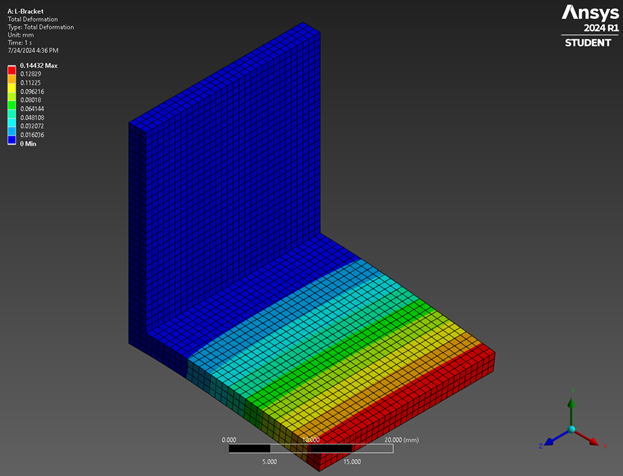
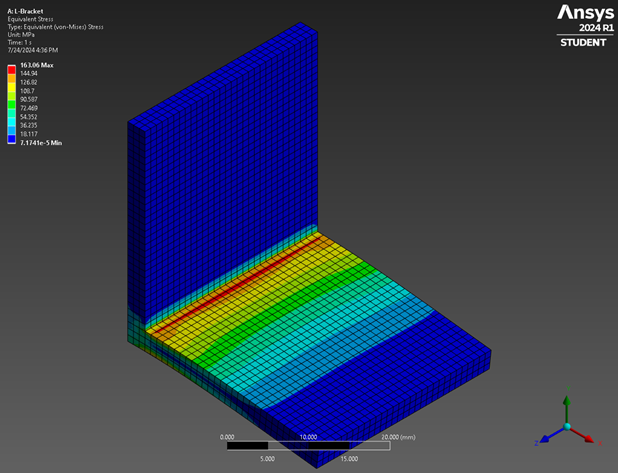
.png)
Total Deformation of the Ribbed L-Bracket
The Total Deformation Analysis of the ribbed L-bracket was a crucial part of the performance evaluation. Total deformation refers to the overall displacement experienced by the bracket when subjected to operational loads. This analysis helps in understanding how much the bracket deflects under stress, providing insights into its stiffness and structural resilience.
Visual analysis through contour plots confirmed that the high-deformation zones (indicated by red and orange gradients in the original bracket) were either significantly reduced or eliminated in the ribbed version. The ribs not only reinforced the critical stress points but also maintained material efficiency by adding minimal weight.
Furthermore, the deformation analysis validated the robustness of the ribbed bracket under various load conditions. The substantial reduction in deformation indicates that the ribbed design can sustain higher loads without compromising structural integrity, making it highly suitable for practical applications where durability and reliability are essential.
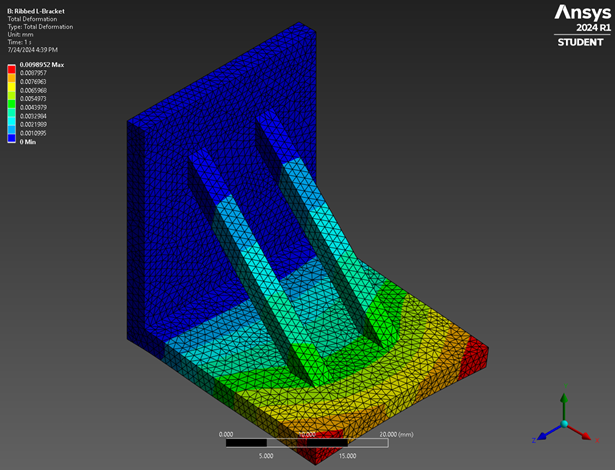
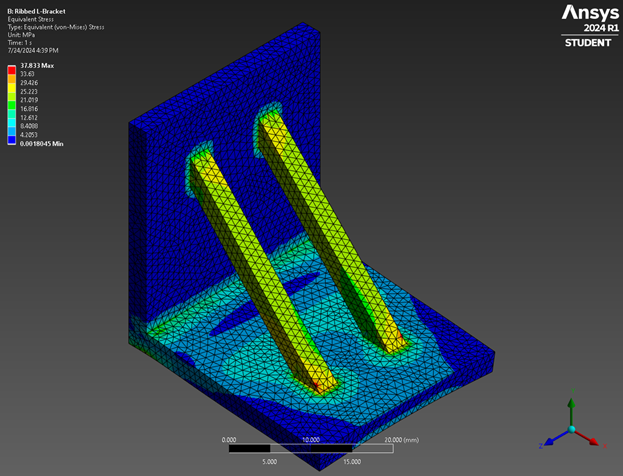
.png)
Analytical Calculations Focused on Mesh Convergence and Stress Analysis
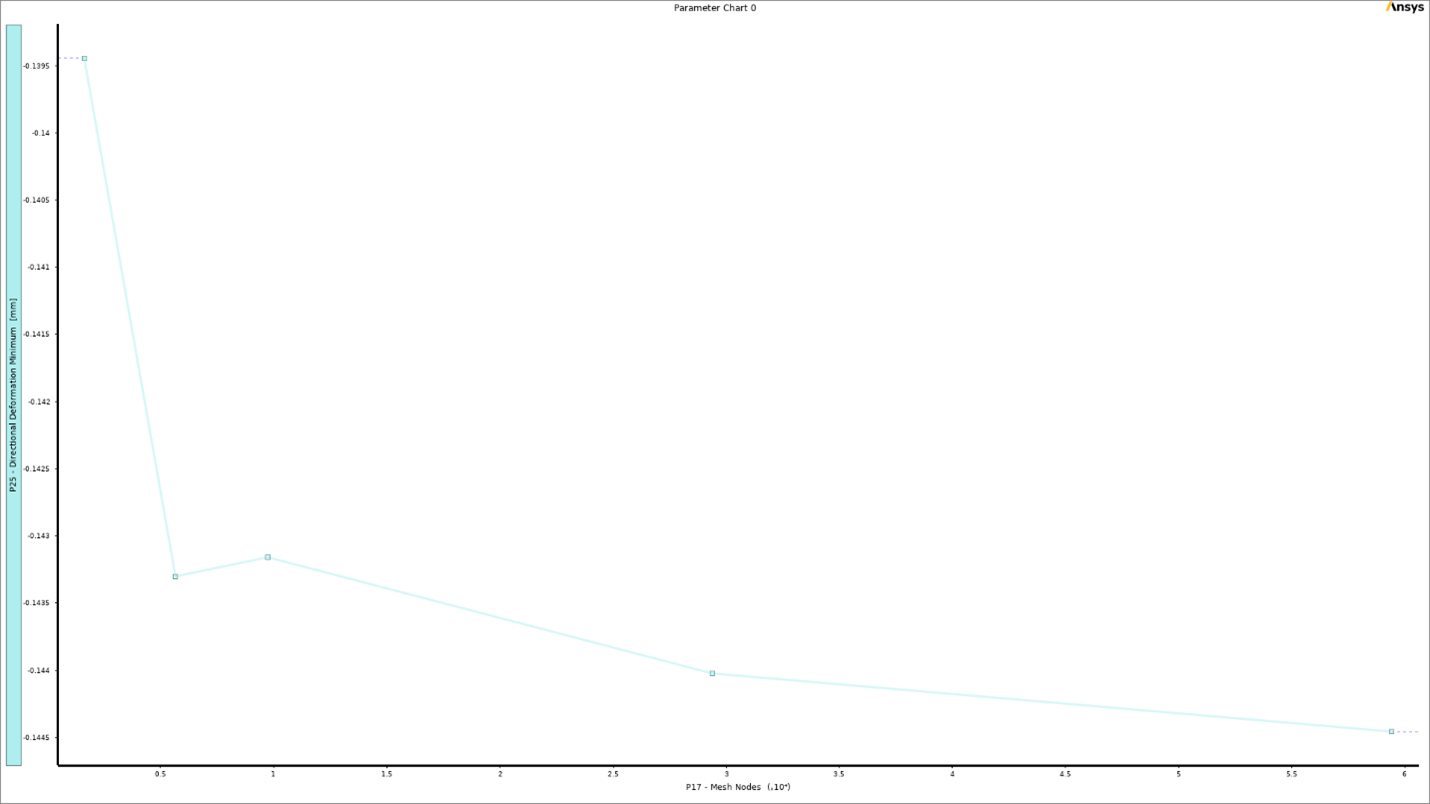
Mesh Convergence for Original L-Bracket
- Observation: Significant deformation observed around bending points and attachment areas. The directional deformation minimum stabilized at higher mesh densities, indicating mesh independence.
- Chart Analysis: The directional deformation decreased sharply as mesh nodes increased, stabilizing beyond 5×104 nodes. Final directional deformation minimum: 0.1395 mm.
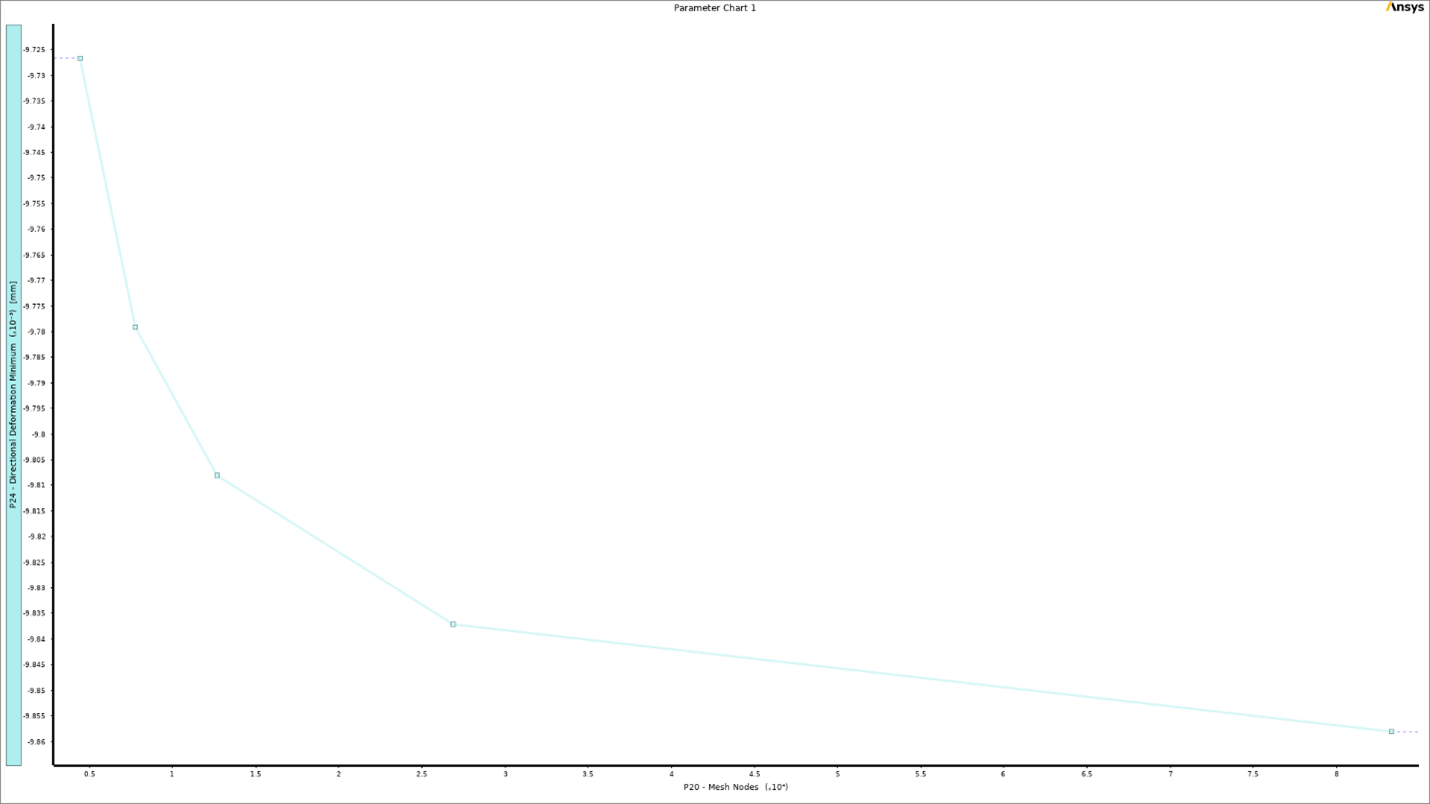
Mesh Convergence for Ribbed L-Bracket
- Observation: The introduction of ribs led to a more gradual convergence, stabilizing faster compared to the original bracket. Deformation values stabilized beyond 6×104 nodes.
- Chart Analysis: Final directional deformation minimum: 0.0856 mm.
- Deformation Reduction Achieved: Relative change formula: 38.64% reduction.
Stress Analysis
Stress Distribution in Original L-Bracket
- High stress concentrations at the junction of bracket arms and along load-bearing edges.
- Stress levels reached critical values, making these areas prone to mechanical failure.
Stress Distribution in Ribbed L-Bracket
- Peak stresses drastically reduced.
- Stress distribution more uniform, especially at previously critical junctions.
- The addition of ribs redistributed stress paths effectively, enhancing overall strength and durability.
Deformation Analysis
- Original Bracket: 0.1395 mm
- Ribbed Bracket: 0.0856 mm
- Reduction Achieved: 38.64% (Exceeds the 30% target)
The substantial decrease in deformation highlights a significant increase in structural stiffness due to the added ribs.
Summary of Analytical Findings
- Deformation Reduction: 38.64% (Target: ≥30%)
- Stress Distribution: More uniform, with critical stress points mitigated.
Conclusion: The mesh convergence and stress distribution analyses confirm that rib addition drastically improves structural performance.
Recommendations for Further Analysis
- Conduct physical load tests to validate simulation predictions.
- Optimize rib geometry for potential weight savings without compromising strength.
- Include fatigue analysis under dynamic loading conditions.